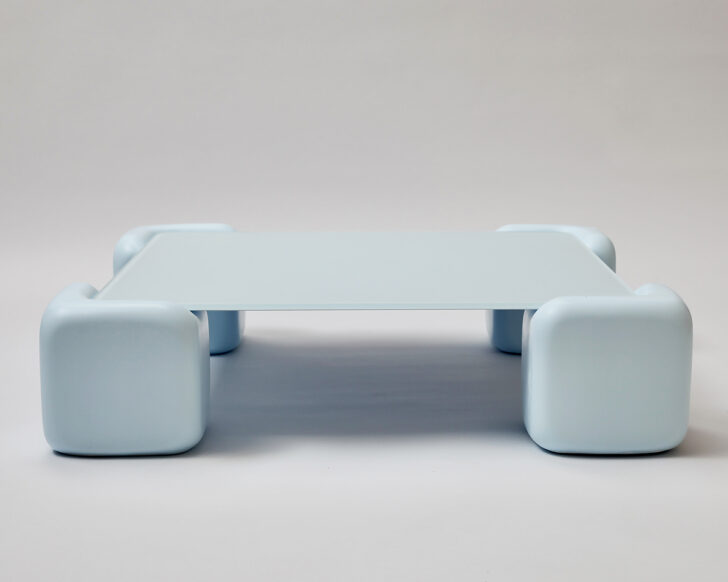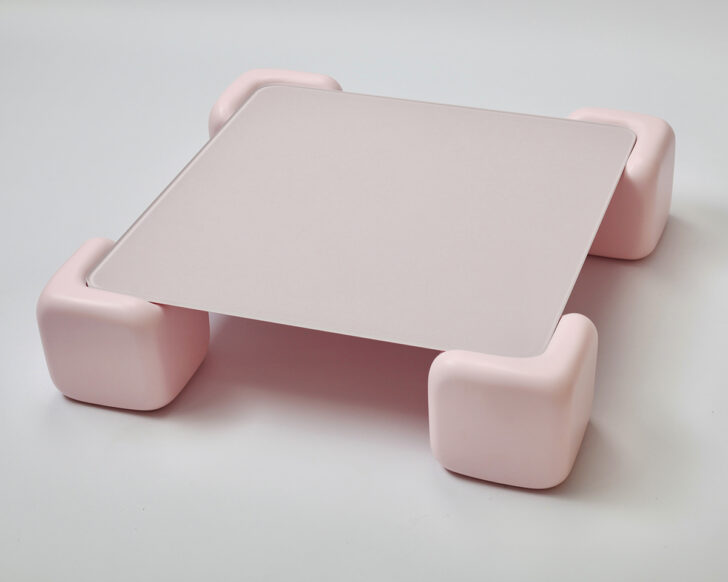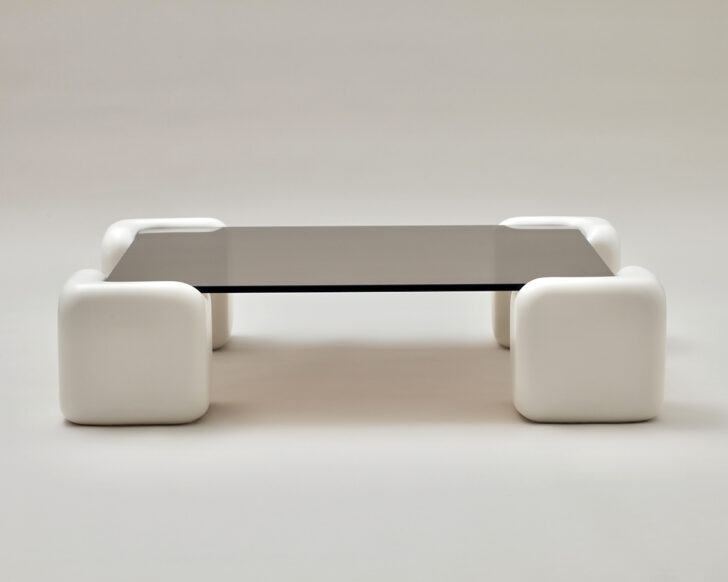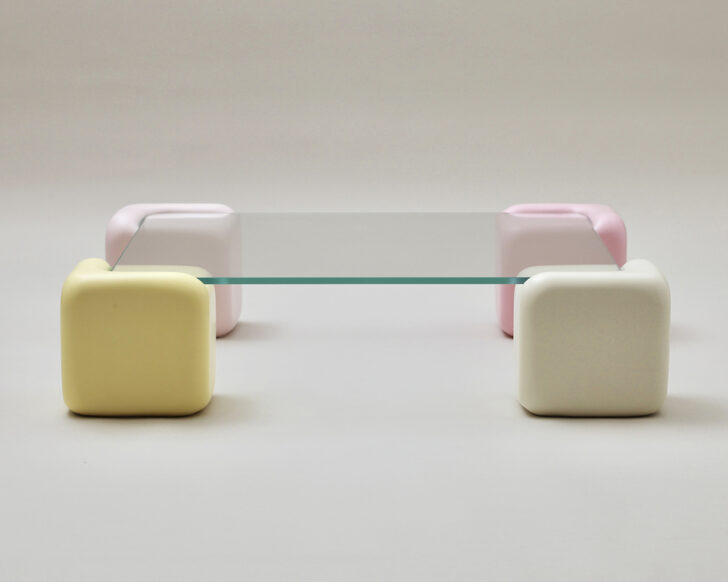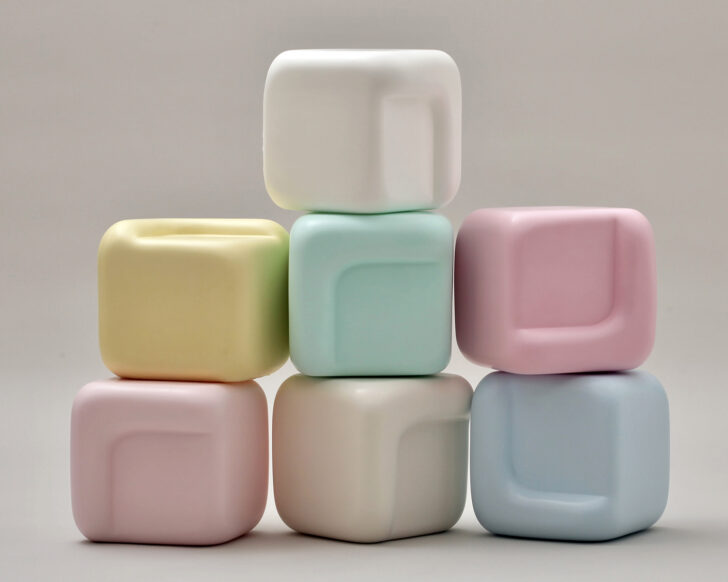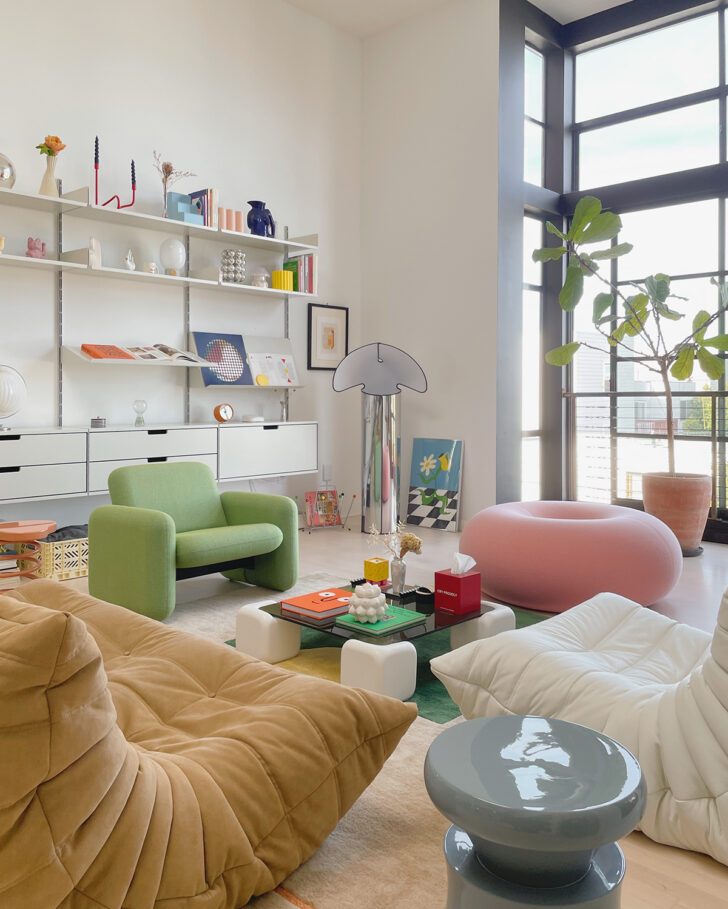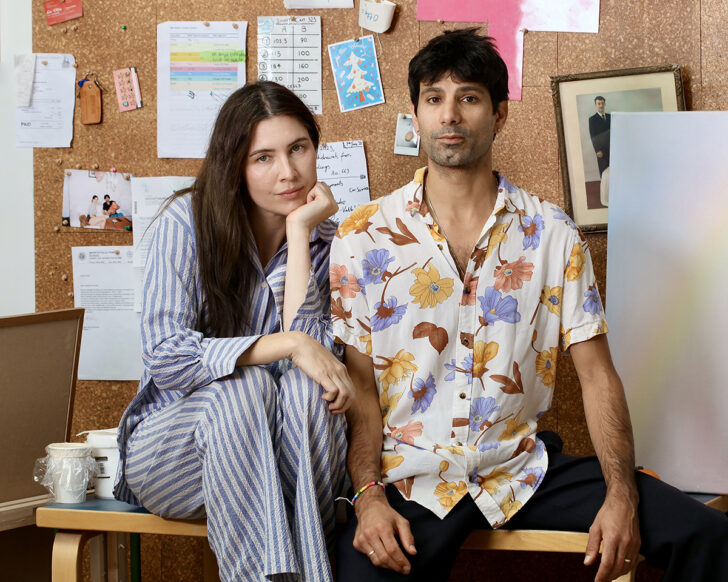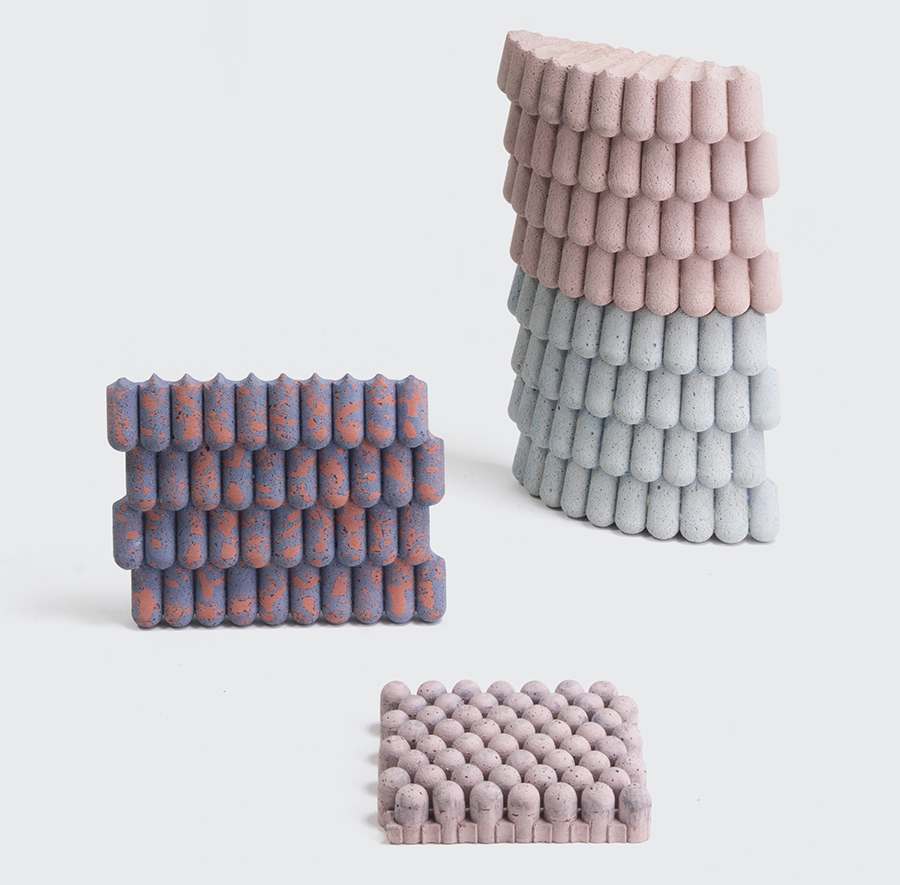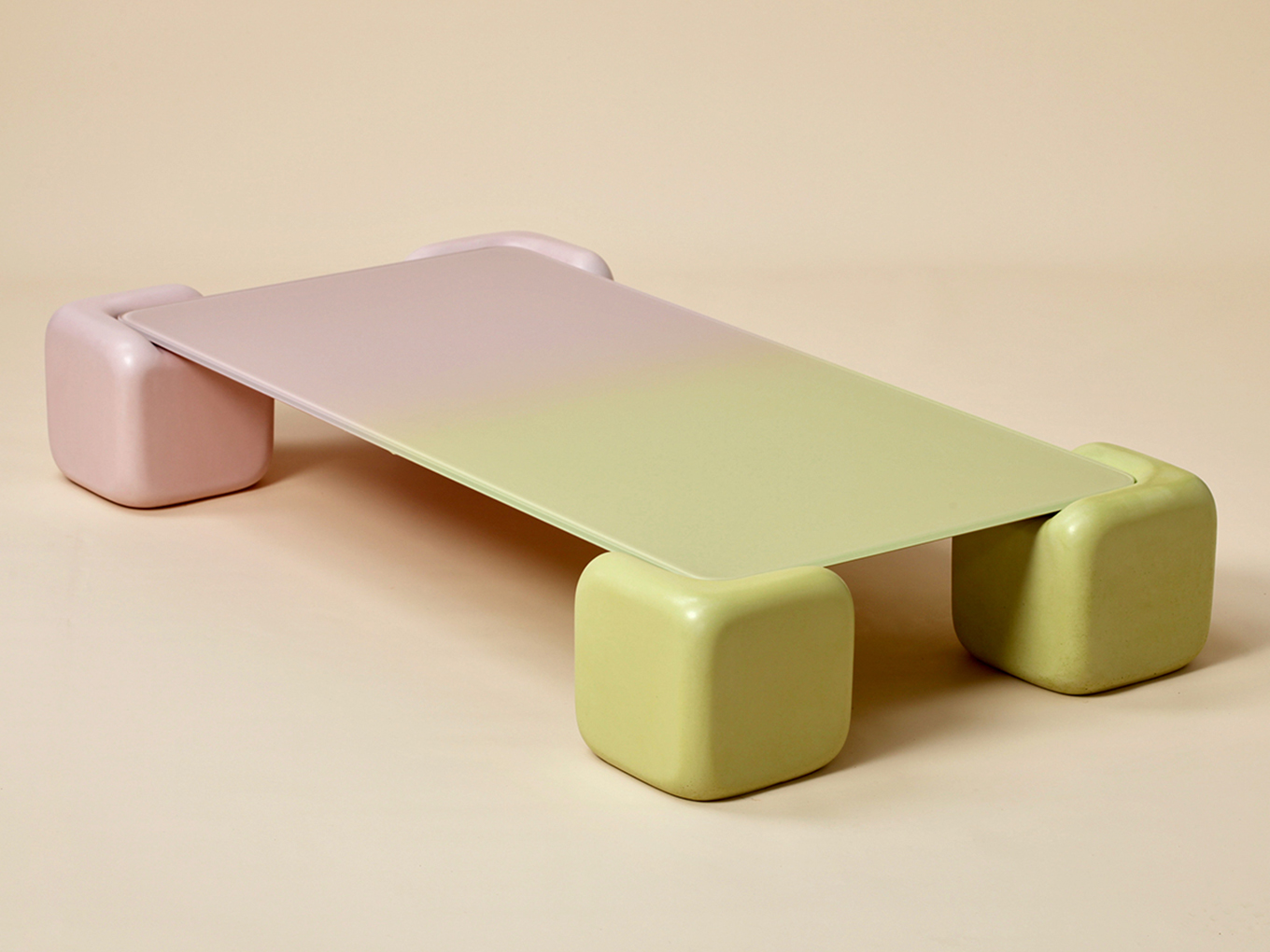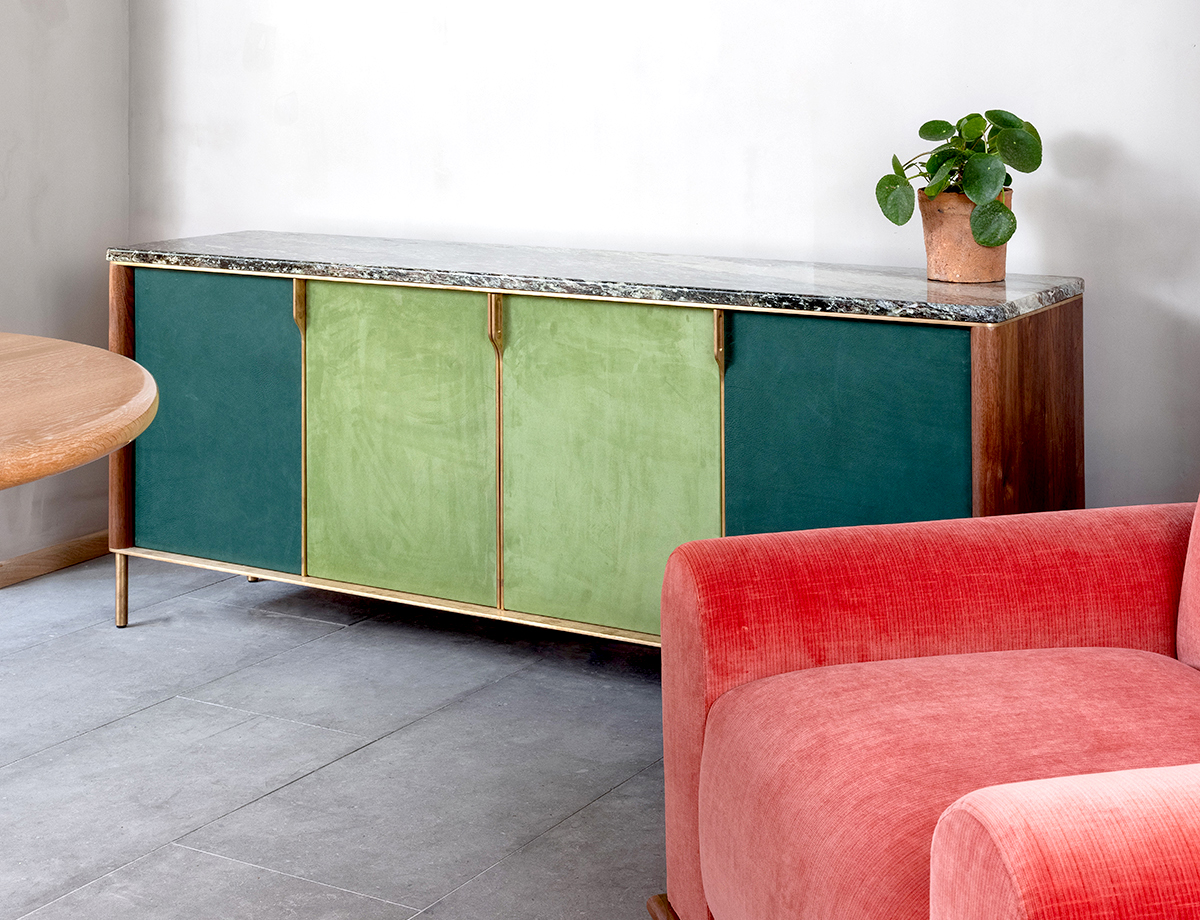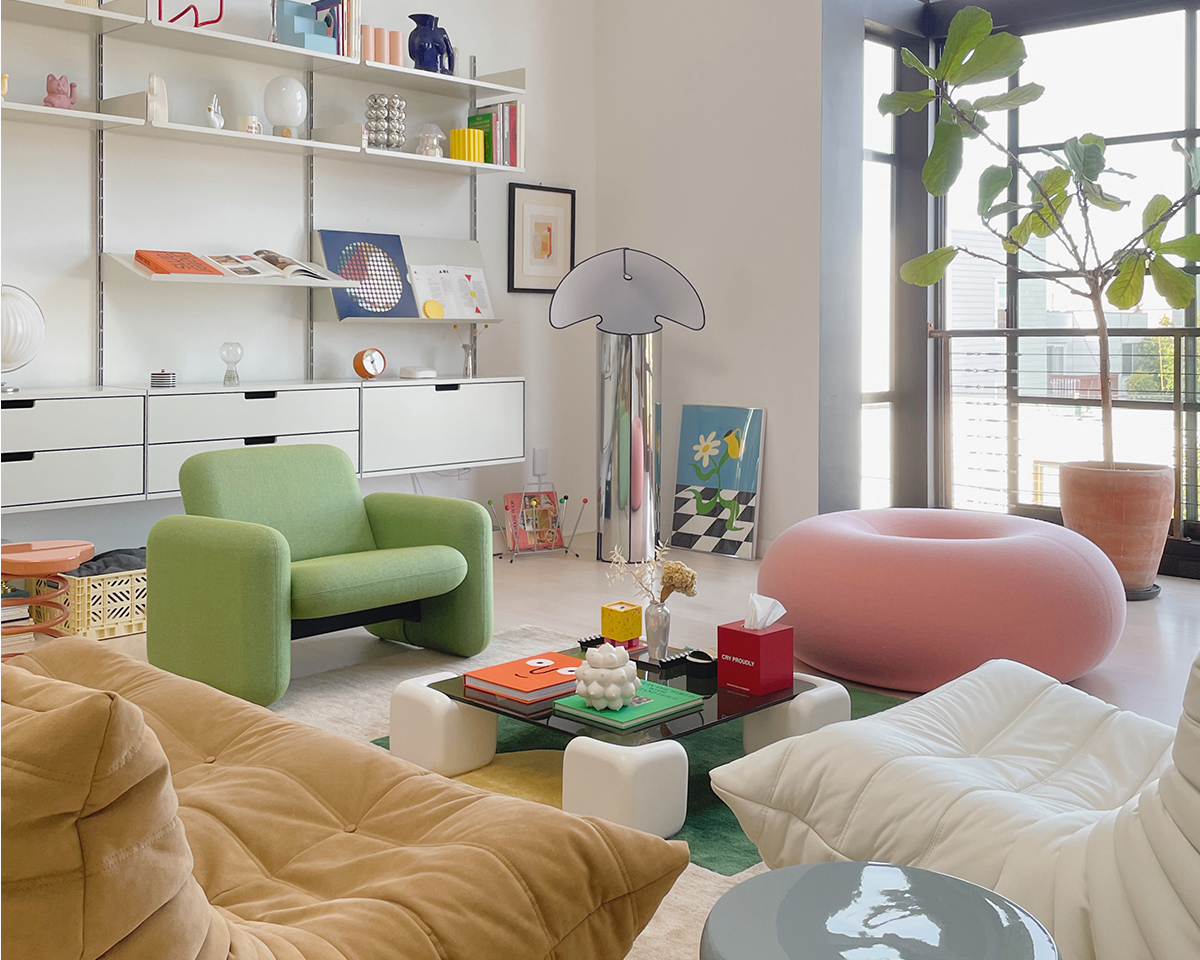
02.05.24
Sight Unseen Collection
It’s Not Often That a Designer Strikes Gold With Their First Big Product, But Studio Mignone Nailed It With Their Beloved Tavolo Morbido
When Studio Mignone’s Tavolo Morbido coffee table debuted in 2019, it became something of an instant, and soon much copied, classic. Tavolo Morbido is Italian for soft table, which gets at what Isabella Wood, one half of the Australian design duo, calls the “illusionistic softness” of the piece. But the name is also a little ironic: The original version was made of solid concrete pillars. It’s a relatively simple design, but a generative one that’s led to many iterations. It perfectly embodies a kind of maximal minimalism — clean, straightforward forms that contrast with the exuberance of their materials, colors, and surfaces — which is also what makes it work in so many different style spaces.
Isabella and Aldo Mignone, who started their studio in 2018, both come from creative backgrounds. Isabella attended the National Art School, focusing on painting and drawing while Aldo pursued stints in graphic design, furniture making, studying saxophone at the Conservatorium of Music and also studying drama and acting in television for a number of years. The two met at a party in Sydney and hit it off. “We started our work together because we were both curious about materials and design,” says Isabella. “I think we were just attracted to creating something,”
After the birth of their child and a move to Adelaide, where Aldo is from, they found themselves “kind of at a crossroads in life,” says Isabella. “The previous versions of us were left behind and there was space for something different to come into our world.” Without overthinking it too much, they started exploring and experimenting with materials, like concrete, marble, and terrazzo. “Terrazzo itself allows for many moments of interaction within the process to create different outcomes, depending on what aggregates you use, what size, what type of marble, what color, and then what type of concrete colors and pigments you’re using as the base. And then how are you shaping and finishing it? That really was the catalyst for our design work: asking ourselves, what can we do with this material? What would be interesting?”
They initially came up with the Curve table – two stout, D-shaped terrazzo pillars supporting an ovoid glass top. It was very labor-intensive and they wanted their next piece to be “an exercise in stripping back… this is where the idea and the exploration for Tavolo Morbido began,” explains Isabella. They started balloon casting, squishing a plaster-filled balloon into a box situated around the corner of a marble slab. “We did a few different versions of that blob. We lined them all up and then we looked at the visual and functional elements of each. Then we decided on the one. It was just The One. We’ve had the same hero piece ever since. It’s a special piece we keep boxed away in a blanket. It’s very precious.”
Opting to use concrete for the pillars that anchor the marble top, as they initially did, determined the look of the table, to an extent, keeping it low and modular (and moveable and shippable). As a design, the Tavolo Morbido captured their attention and continues to hold it, even as they’ve venturing into new territory. Isabella, speaking on behalf of the studio in our conversation after the jump, gave us some details of what that might be. “We’re always pushing and pulling with our idea versus the material, the practicality, all these different things. And at the same time trying to flip something on its head a little bit.”
Top photo: The Tavolo Morbido, as seen in the San Francisco living room of Aden Wang & Vivid Wu
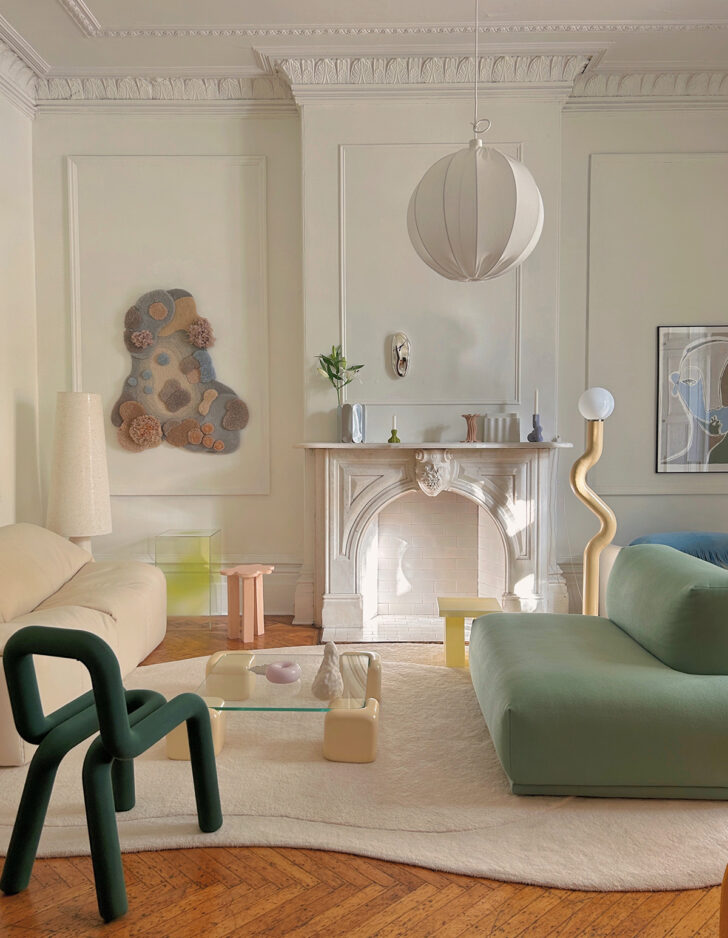
The Tavolo Morbido, as seen in the Montreal living room of Lauren MacLean, aka Living By Lo
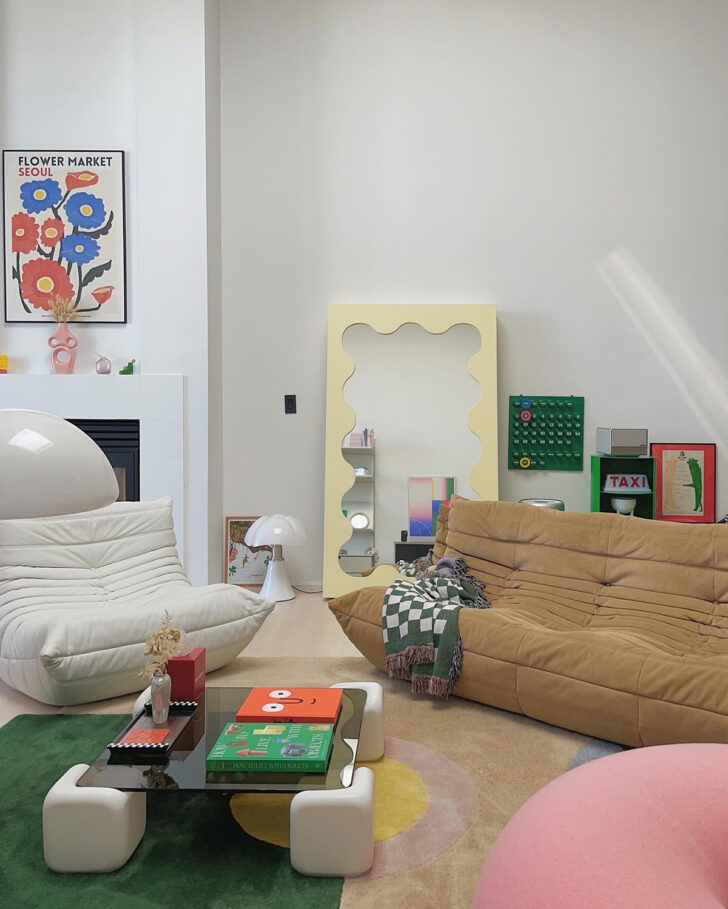
Top photo: The Tavolo Morbido, as seen in the San Francisco living room of Aden Wang & Vivid Wu 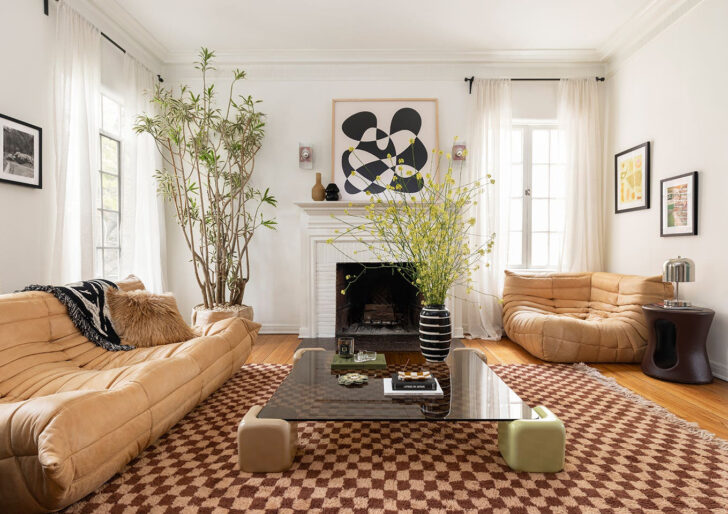
Top photo: The Tavolo Morbido, as seen in the Los Angeles living room of Alyssa Coscarelli, via Domino
Upon its release, the Tavolo Morbido became kind of instantly iconic. Why do you think that is?
I think part of it has to do with the deceptively simple design elements and color. Also, from the beginning, our table began to be paired with historically iconic designs. It lent itself to becoming this center point in a room, where people would have, say, the Michel Ducaroy Togo sofa. We were also seen placed with other contemporaries gaining a lot of popularity at the time, such as Gustaf Westman. So, we were immediately in this lovely arena of interesting design.
Looking back at the first moments with the table, I have such a strong memory of when we made the blob, when we created the first table. It was so exciting and I just looked up at Al and said, “This is going to be big for us. This is going to be our business.”
I definitely saw a vision of it being a bit of an icon due to the simplicity of it, and you know, we were like, How has this never been done? The irony of that statement is that a few years after creating our table, I saw what I suppose was a very obscure unnamed vintage design that was supposedly created before our table and by absolute coincidence very similar. So, the idea, I guess, had been explored before, but not in any kind of well-known or significant way. It’s really hard to come across a completely original idea in design. Though how our work came to be and how we explored and applied our materials and everything, obviously are completely unique to us and very different to that vintage piece.
If I could pinpoint a single inspiration for the Tavolo Morbido, it would be Gae Aulenti’s Jumbo Table. The beauty of what she created rested solely in the simplicity of component forms and in allowing the natural beauty, patterning, and color of the marble to be the hero: no bolts, metals, or attachments, just rock. I love how it was just seamless marble articulated around the four posts, audacious and unapologetic.
Tavolo Morbido is sort of a reverse of the Jumbo table components: Instead of the corners cutting in, they come out and the pillars cut around the tabletop.
Another huge defining factor of that design was we really wanted to present it as a marble tabletop with concrete pillars. I always wanted to play with color, like matching the concrete with one of the colors in the marble. I’ve always been a bit color obsessed, which comes from the satisfaction of learning how to mix colors. We did a Norwegian pink marble with pink concrete, so you get this beautiful effect of the man-made concrete with the natural stone, but tying the materials together with color. When your eye gazes across, it doesn’t shock. It is sort of harmonious… but unexpected.
We also loved that it was shockingly low. It’s got a profile just shy of 8 inches. Some people want a very low profile. They want to gaze across a living room and see books and flowers and a vase stacked atop a table that isn’t interfering too much in the space. It’s more graceful.
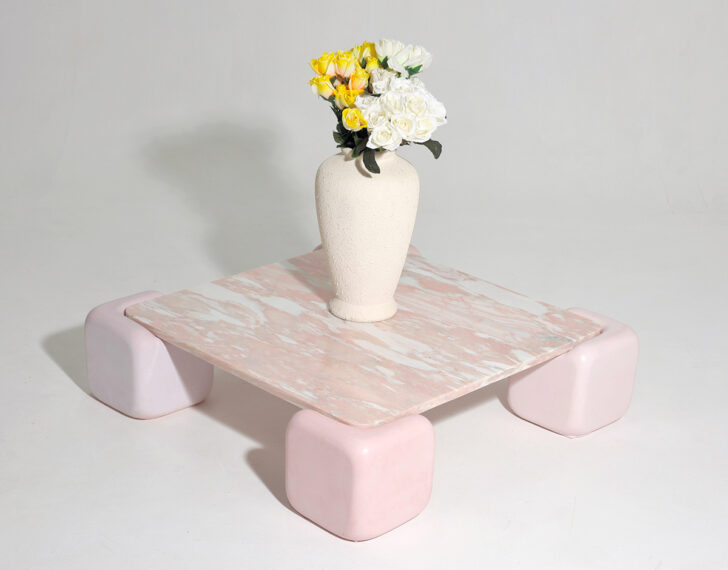
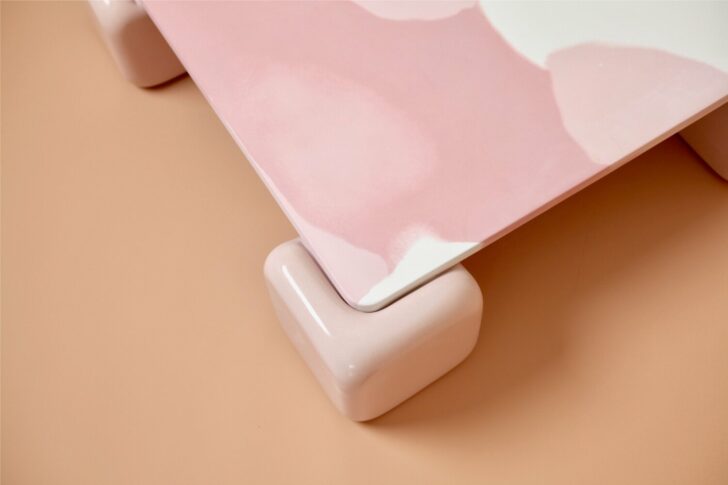
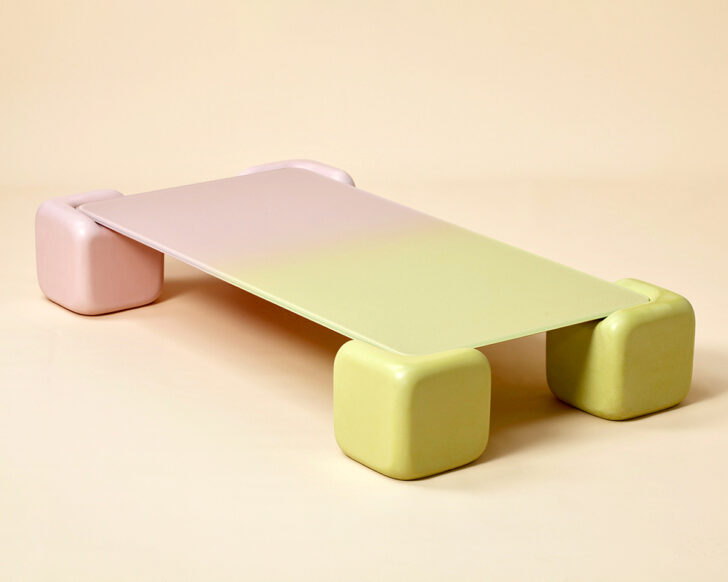
Previous iterations of the Tavolo Morbido
It’s gone through a lot of iterations. I’d love to know how those came about. And do you want to keep exploring or do you feel like you’ll reach a point when you’re done?
After the marble top, we made a silicone mold of the marble tabletop, and created concrete tabletops that were reinforced and powder-coated steel backed. Three shades of concrete swirled into the mold.
We do kind of stumble into things. Looking into glass tabletops for another design, we came across some bronze glass from a local ex-glazier in Adelaide. One of the pieces had the exact radius corner, unbelievably, that fit the table. We had this piece of stock glass – much thinner than what we use but we were able to plonk it down on the pillars and just go, wow, this looks incredible. The beautiful luminosity of the bronze glass against the pink pillar or a white pillar. It just was next level because we had only been working with a marble tabletop previously.
So, we went from marble to concrete to glass, bronze glass being first, then clear. From there, we went to painted glass, another process with a connection to someone we knew here that painted automobiles and did crash repairs. We used him to do an ombré painted edition, which was specifically for Sight Unseen.
We have since homed in on some of the finer details of the glass, offering an acid-etched version. We put the matte finish surface-side up, so the surface looks velvety and with no gloss and refection on the glass. That’s our final iteration of Tavolo Morbido.
Along the way, we moved to a resin finish for the pillars. The resin finish has a lightweight concrete core. So it’s lighter weight with the thick resin outer material but still retains the solid and tactile feeling of the concrete.
In a way, we can pinpoint a connection to people we meet that have spurred a different version… meeting someone and then hearing a bit of their story and some of their knowledge and then thinking, wow, yes, this could be great for our work. Same with the painted glass. Most of the iterations really have stemmed from a conversation with somebody who has a little bit more knowledge than us and then we are so open to creative exploration that we will try anything really, I guess, and see what happens. It’s to do with people, I think.
The exploration continued, and it still does to this day, but I think we’ve reached a point where it sort of is where it is, and we need to make time for other new ideas and creations to come in. This design has kept us extremely busy, both in orders and in ideas.
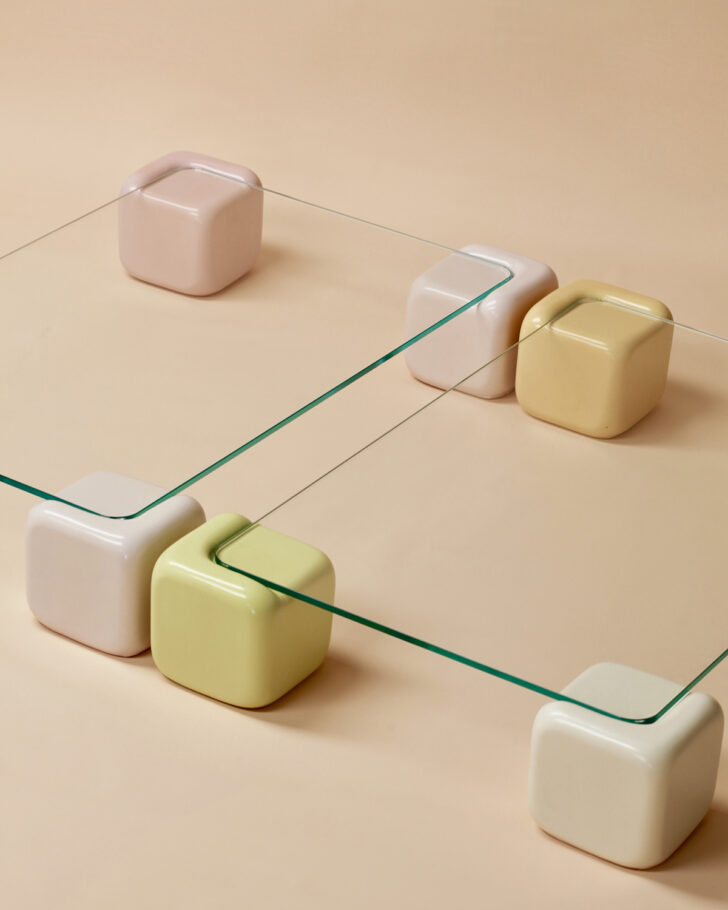
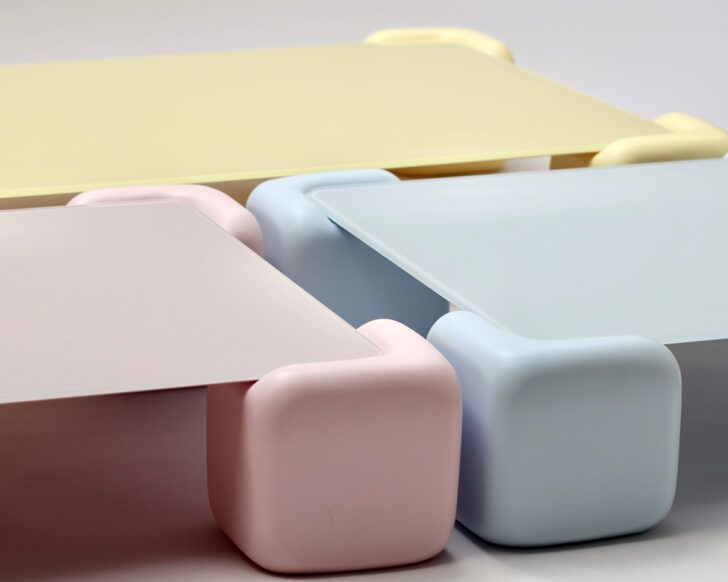
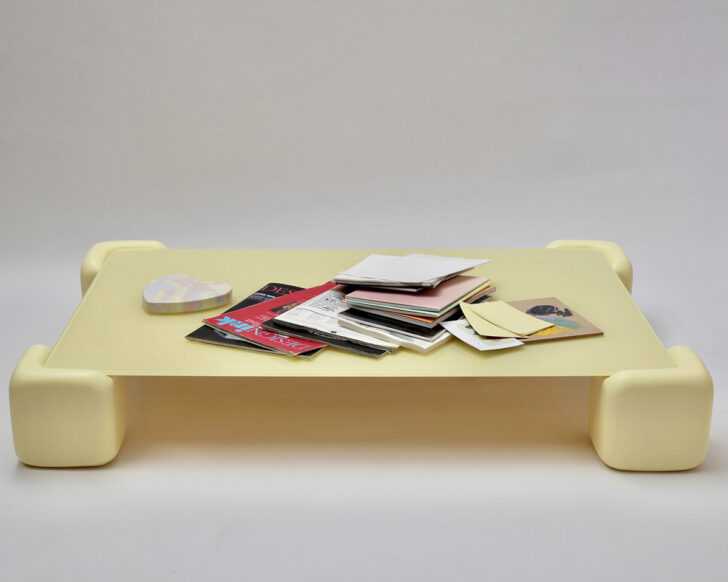
The current table, for sale via the Sight Unseen Collection!
The popularity of the Tavolo Morbido has led to a bunch of dupes and online DIY tutorials. I know imitation is a form of flattery, but does it bother you?
No one will ever fully capture the spirit of the pillar of the Tavolo Morbido because it didn’t come from a digital space or even a 2D space like a sketch. It came from a physical place that allowed for slight proportional imperfection. So, you’ll find that the dimensions of Tavolo Morbido, if someone’s just looking at images and creating a 3D render or a 3D printed version, it’s just never going to hit the mark. There are slight irregularities with our pillar that make it completely unique. It looks perfect, it looks symmetrical, but really it’s not perfect and that’s part of the allure of the piece. If it is too perfect, it’s not our work.
Our table looks super seamless and very simple, but it wouldn’t be necessarily easier for a machine. It has to be handcrafted and finished and we have certain techniques and tricks and things that we do with it that allow it to even be makeable the way we do it. So yeah, it’s a weird one.
When it comes to the DIY, we find it quite flattering. Initially there was small but strong pang inside when I saw someone copy our design. You feel a bit angry or annoyed and you immediately want to get your back up. But it would be silly to hang onto that feeling. I actually love that people are inspired to make something themselves, because that’s all that we are really doing, so yes, the fact of our work being re-created, it actually feels pretty special. I think you just have to appreciate that the work is so well received, just be happy that it’s got its own world and fans. It’s sort of taken off and it’s become its own thing, which is really cool.
I’ve seen dupes that even have their own interesting element, so they’re not only duplicating it, but they’re sort of adding their own artistic flair and what they want. I now take the stance of Good on them. We could even collaborate with someone who’s doing 3D printing – I like the idea of those connections and creating a broader conversation.
And the people who are buying the dupes… it’s very different markets. Our work is an investment and it may not be attainable for all. We make everything by hand and are involved in every process. We really want to have a legacy with our design and we want it to feel like it is this thing in a moment in time. We want it to be a very special piece that can be a collectible piece of art design, you know, that in 20 years or 50 years or however long, even if it is worn, even if it is faded or old, it’s still got that value because it was created by us in a certain time and had a certain moment.
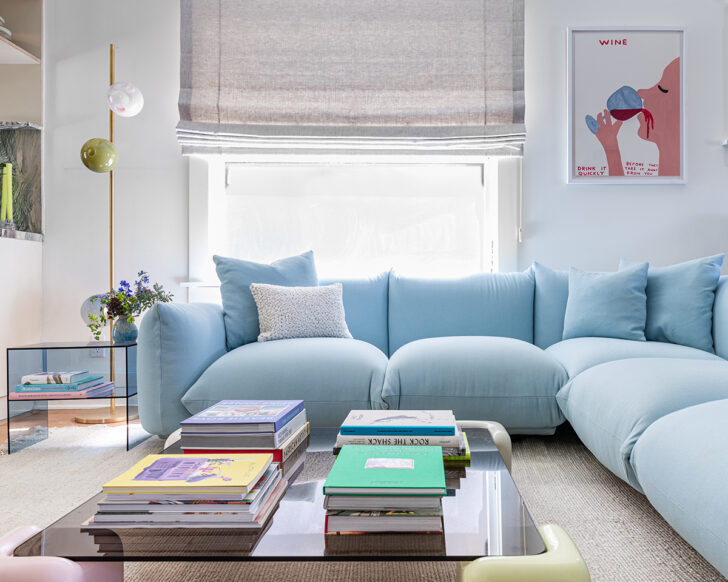
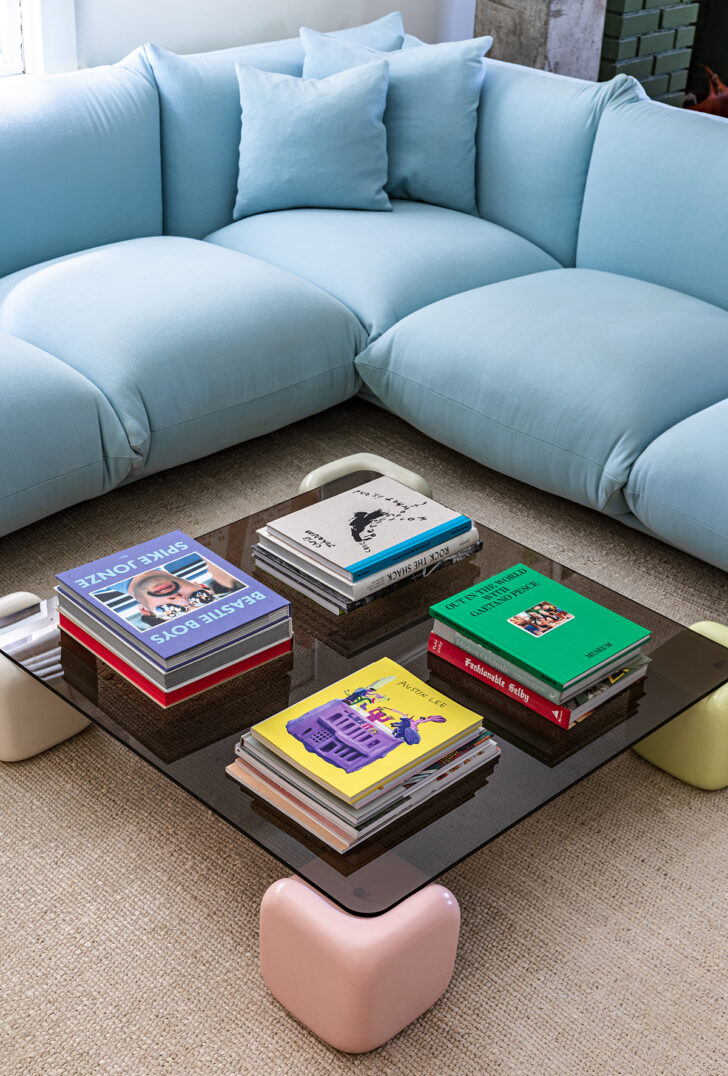
Top photo: The Tavolo Morbido, as seen in the Los Angeles living room of Eric Bach, design by Another Human
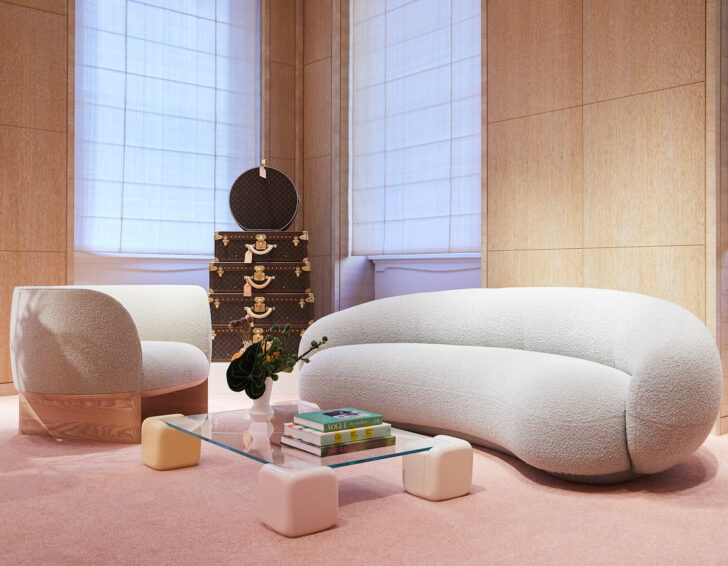
Top photo: The Tavolo Morbido, as seen in the Louis Vuitton Summer Lounge
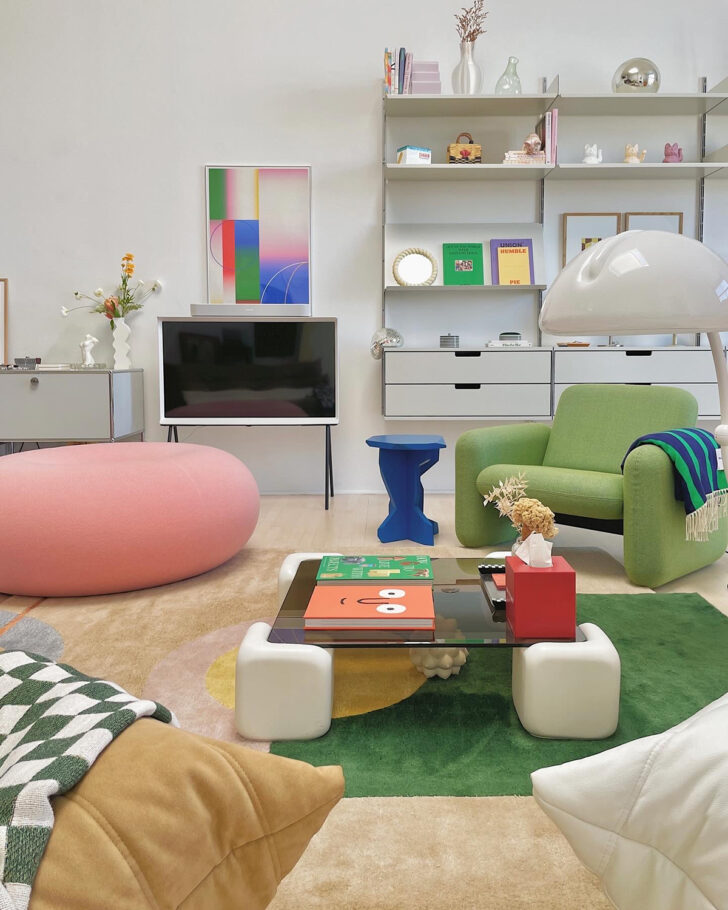
Top photo: The Tavolo Morbido, as seen in the San Francisco living room of Aden Wang & Vivid Wu
What’s your design process like and how do you play off one another?
Al and I have different ways that we think about design, but we are both open to experimentation and mistakes. Anything can become something. Any element could open a door to another idea or version. We don’t necessarily do a drawing of a design and lock it in and say, this is what we want, now let’s gather resources and make that vision. That’s probably what we shoulddo… but that to me feels very closed. What we do is work on something and then an idea will spark from one of the processes. And then we go from there. We just used our first terrazzo table design as an inspiration for a new birch plywood table so we’re recycling some our own ideas already.
In the process of making this new C-shaped birch plywood pillar for the table (Curve 2) we found a design idea by flipping the form on its side and just thought this would be an incredible stool. I threw an image of it up on Instagram because I knew that someone would come forward if it had already been done, and lo and behold there was another designer that had made [something] similar. Rather than abandoning the idea, we kept the stool as the foundation for a chair design. Someone claiming the stool idea just made us push our ideas and made our design more interesting and better. So we’re making (if it works) our first foray into the world of seating. It is a birch plywood bent cantilever chair. It is very simple with bold sweeping lines and will have some other added details to the finish.
We’re loving the natural tones of the birch and, also, one of the most maximalist–minimalist elements one can have which is the simple design lines and neutral wood tones but with the beautiful pattern in the grain. A gorgeous combination! Minimalist-maximalist. Same with Tavolo Morbido,
In addition to the Tavolo Morbido and this new chair, what are you working on?
We’ve just had two little releases of designs. One is the Curve 2 table, based on our first design, a full-circle moment where we’ve taken the shape of the table pillar but created it in bent birch plywood. Much like Tavolo Morbido, the components stack to create the table. And with the base of the table, you can change the formation under the glass, as long as it’s balanced and weighted properly. You can make the C’s face in, face away, you can do a loose interlocking formation, which creates more of a central table base. It’s just a lovely light design, in terms of actual weight but also the materials.
We also just soft-launched a chessboard. A bit of a symbolic but also very kitsch idea that the pawns would be discarded chewing gum came to mind. Like when you see a piece of chewing gum pressed against a desk or squashed onto a surface and it still has the teeth marks. I decided that they would be the pawns for the chessboard. I liked the idea of having a playful take on a chessboard because chess is seemingly serious. And I do see a lot of designers doing a very minimalist chess sets, Bauhaus is obviously the most iconic. You can’t really top that in terms of a minimalist take on a chessboard, it’s ingenious that the chess pieces denote the direction of the moves of play. It’s just wonderful.
But the gum feels very of our time, like a late-stage capitalist take, the gum being sort of cheap and nasty, but also discarded. Sort of symbolic of a pawn – chewed up and spat out. So, then it came to the other pieces like the King, Queen, Rook, and Knight and I decided to give them the gummy-looking effect as well. These are all cast in resin. I decided to do the board in resin, and I was going to do a very slick and simple resin. And then I just decided, no, I’m going to make it to look like it’s made of Play-Doh. I squished out all those squares by hand. I didn’t try and patch up the areas where the outer border of the chessboard met. It’s lightweight enough to take away on a trip if you wish, but it’ll also be a piece that is going to look interesting on display. There’s a nice tenuous like between chess and gum… chewing gum while playing is supposed to make for better concentration and playing.
And what’s next for you? Where do you see Studio Mignone going?
Well, we hope to just keep slowly plugging away at ideas and creations that spark our interest. We’ve got the chair coming. That might be the next big(ish) thing that you see from our studio. There’s also a heart mirror that’s been in the works for years, but we’re still looking into the way we materialize that. And then alongside our design work, I think we will be continually trying to find a little time for our personal artistic pursuits, while making sculptural furniture for people’s homes.
We spend a long time producing a certain thing and then changes and iterations happen as we go. We only know what’s a few steps in front of us, really. We know what the next thing is when we’re working on it. That’s how we keep our expectations in check.
